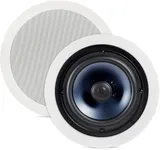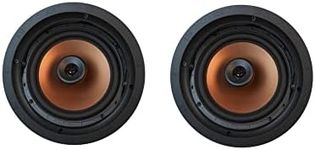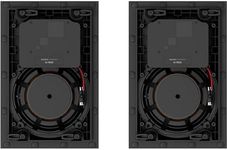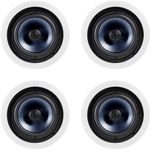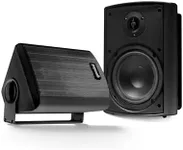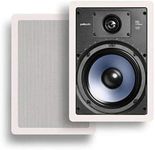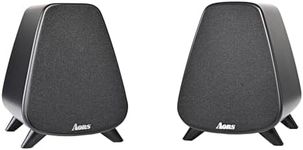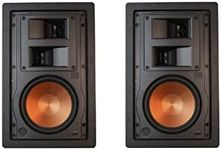Buying Guide for the Best Inwall Speakers
In-wall speakers are a great choice for those looking to save space and achieve a clean, uncluttered look in their home audio setup. They are installed directly into the walls, providing a seamless integration with your room's decor. When choosing in-wall speakers, it's important to consider several key specifications to ensure you get the best sound quality and performance for your needs. Here are the key specs to look at and how to navigate them.Speaker SizeSpeaker size refers to the diameter of the speaker's driver, usually measured in inches. This spec is important because it affects the speaker's ability to produce different frequencies. Larger speakers (8-10 inches) can produce deeper bass and are suitable for larger rooms or home theater setups. Medium-sized speakers (6-7 inches) offer a good balance of bass and clarity, making them versatile for various room sizes. Smaller speakers (4-5 inches) are ideal for background music in smaller rooms or spaces where space is limited. Choose the size based on the room size and the type of audio experience you desire.
Power HandlingPower handling indicates the amount of power (measured in watts) a speaker can handle from an amplifier without being damaged. This spec is important because it ensures that your speakers can handle the power output of your amplifier. Speakers with higher power handling (100 watts or more) are suitable for high-powered amplifiers and larger rooms. Mid-range power handling (50-100 watts) is adequate for most home audio setups. Lower power handling (under 50 watts) is suitable for smaller rooms or less demanding audio applications. Match the power handling of the speakers to your amplifier's output to avoid damage and ensure optimal performance.
Frequency ResponseFrequency response measures the range of frequencies a speaker can reproduce, typically given in Hertz (Hz). This spec is important because it affects the overall sound quality and clarity. A wider frequency response (e.g., 40Hz-20kHz) means the speaker can reproduce both deep bass and high treble sounds, providing a fuller audio experience. A narrower frequency response (e.g., 80Hz-15kHz) may lack some bass or treble detail. Choose a speaker with a frequency response that matches your listening preferences and the type of audio content you enjoy, such as music or movies.
SensitivitySensitivity measures how efficiently a speaker converts power into sound, usually expressed in decibels (dB). This spec is important because it affects the volume and clarity of the sound produced. Higher sensitivity (90 dB or more) means the speaker can produce louder sound with less power, making it suitable for larger rooms or high-powered systems. Medium sensitivity (85-89 dB) is adequate for most home audio setups. Lower sensitivity (below 85 dB) may require more power to achieve the same volume, making it better suited for smaller rooms or less demanding applications. Choose a sensitivity level that matches your room size and desired volume levels.
ImpedanceImpedance is the resistance a speaker offers to the electrical current from the amplifier, measured in ohms. This spec is important because it affects the compatibility between the speaker and the amplifier. Common impedance values are 4, 6, and 8 ohms. Lower impedance (4 ohms) can draw more power from the amplifier, potentially providing louder sound but requiring a more robust amplifier. Higher impedance (8 ohms) is easier on the amplifier and is suitable for most home audio systems. Ensure the impedance of the speakers matches the recommended range of your amplifier to avoid damage and ensure optimal performance.
Installation DepthInstallation depth refers to the depth of the speaker that will be recessed into the wall. This spec is important because it determines whether the speaker will fit into your wall without protruding or causing structural issues. Shallow depth (less than 3 inches) is suitable for walls with limited space, such as those with insulation or wiring. Medium depth (3-4 inches) is common and fits most standard walls. Deeper installations (more than 4 inches) may require special considerations or modifications to the wall. Measure the available depth in your wall and choose a speaker that fits within that space to ensure a smooth installation.

